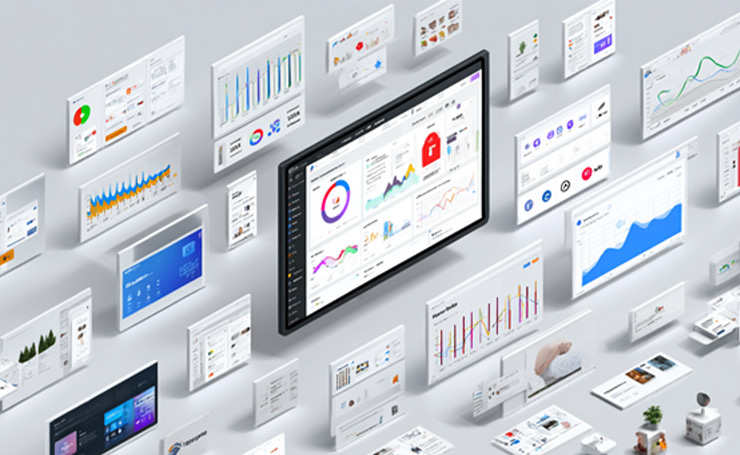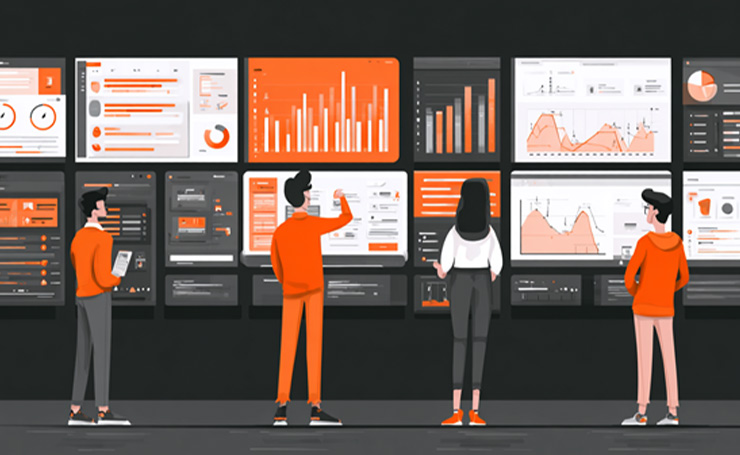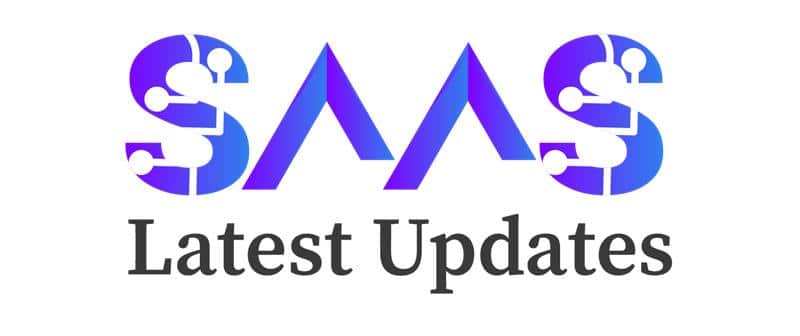Businesses constantly need to change and adapt as technology advances. At the forefront of this change is B2B SaaS, or Business-to-Business Software as a Service. It has transformed how businesses operate, from customer management to team collaboration.
In this guide, we will walk you through what is B2B SaaS, its benefits, challenges, top companies, and much more. Whether you are new to the concept or just want to increase your knowledge, we will help you understand it easily.
30-Second Summary
B2B SaaS platforms have become popular for many businesses for their low upfront costs, scalability, and automatic updates.
In this blog, you will explore what is B2B SaaS in complete detail, how it works, metrics, pricing, its benefits, challenges, and top companies. Moreover, learn how it differs from B2C SaaS and its role in enterprises and SMBs.
B2B SaaS Definition
B2B SaaS encompasses cloud-based software that a business uses to streamline its tasks. It is between two businesses rather than a business and consumers.

For example, business A is a vendor and provides its software to business B to manage daily tasks. In return, business B subscribes to the software on a recurring monthly or yearly pricing model.
How B2B SaaS Works
This is how a B2B SaaS model works.

Cloud Infrastructure and Delivery
B2B SaaS is a cloud-hosted solution available online. You do not have to install it on any device. Multiple employees can use it on their personal laptops and computers. Typically, the vendor manages all updates and patches.
Multi-Tenant Architecture
Many B2B SaaS products work on a multi-tenant architecture. Multiple customers (tenants) can use the same software, but with data separation. This flexibility allows scalability and affordability.
On-Premise vs Cloud B2B SaaS
On-premise: This is the software that is installed on the personal devices of the customers. It provides more control, but the setup cost, including hardware, can be a lot.
Cloud SaaS: Vendor handles the infrastructure, and customers do not have to worry about updates or hefty upfront costs. The cloud is a common model for B2B SaaS, as it offers scalability, agility, and lower ownership costs.
How B2B Differs from B2C
| Feature | B2B SaaS | B2C SaaS |
| Customer type | Other businesses, enterprises, and SMBs | Individual consumers or small teams |
| Sales cycle | Longer and more complex, with multiple decision makers | Short, sometimes instant or automated |
| Pricing | Higher contract values. More custom terms, and often with annual contracts, enterprise tiers | Lower price per user, often monthly subscriptions with more free and freemium usage |
| Features and integrations | More focus on security, compliance, integrations, and enterprise features | More focus on ease of use, simplicity, and user experience |
| Customer support and service | Deeper and dedicated onboarding, customer success teams | Less customization with lighter support options |
Benefits of B2B SaaS
B2B SaaS offers a myriad of advantages.

Cost Efficiency
SaaS offers an affordable alternative to traditional software. You do not need to pay a huge upfront amount for hardware and software. This approach also lowers ongoing maintenance costs, as vendors handle all updates, saving you lots of money in the long run.
Scalability
Businesses can easily scale their subscriptions up and down based on their needs. This ensures that they pay for only what they use. Companies can adjust their resources according to business demands with B2B SaaS products.
Updates and Maintenance
The provider of the software handles updates and maintenance, ensuring businesses get the latest features and security. This takes the burden off the shoulders of the IT team, and they can focus more on strategic tasks.

Integration and API
B2B SaaS tools also offer APIs and integrations with other platforms. This smooth integration increases productivity and efficiency of the team. You can manage workflow better and share data across different systems for operational coherence.
Customer Success and Support
Customers often require onboarding and training to understand the features of a SaaS software. Vendors build dedicated customer success and support teams that help clients and ensure they get value and satisfaction.
Security and Compliance
B2B products use a layered approach that includes multi-factor authentication, data encryption, and continuous monitoring for security. These products are also compliant with industry regulations, such as HIPAA and GDPR.
Uptime and SLA
Most SaaS providers offer cloud infrastructure with an uptime of 99.9% to ensure businesses run their tasks smoothly. This commitment is backed by an SLA (Service Level Agreement). High uptime and SLAs give companies the confidence that the tool will always provide the best results.
Examples of B2B SaaS Companies
Globally, more than 30,800 SaaS companies are active in the market. The following are some of the top companies.

Salesforce
Salesforce is among the leading B2B SaaS companies globally. It assists businesses in managing sales, marketing, service operations, and customer interactions.
Important Features: Sales automation, lead tracking, marketing automation, contact management, reporting, and analytics.
HubSpot
HubSpot serves as a multi-functional marketing and sales platform with a comprehensive tool suite. It provides tools for lead generation, social media marketing, content marketing, and email marketing.
Important Features: Blogging, Search Engine Optimization, marketing automation, CRM, social media management, and analytics.
Slack
Slack is a popular platform used by businesses for collaboration and communication. It offers a smooth channel for team communication through direct messaging, along with video and voice calls.
Important Features: File sharing, instant messaging, team collaboration features, and integration with other tools.
Zoom
Zoom is a communication platform, offering virtual collaboration, webinars, and video conferencing. It is a famous B2B SaaS product used for hybrid and remote work models.
Important Features: HD video and audio conferencing, integrations with other tools, meeting scheduling, and end-to-end encryption.
Microsoft Office 365
Microsoft Office 365 offers more than 100 cloud-based services across multiple industries. According to Statista, Microsoft 365 holds around 38% in the global market.
Important Features: Productivity suite (including Word, Excel, PowerPoint, and Outlook), OneDrive storage, real-time collaboration, and integration with Teams.
Adobe
Adobe has emerged as the standard when it comes to graphic design. This software is transferred to the Adobe Creative Cloud, which has graphic packages for different applications.
Important Features: Creative Cloud apps (Illustrator, Photoshop, and Premiere Pro), marketing automation, analytics, and collaboration across multiple teams and devices.
Common B2B SaaS Pricing Models
Simple SaaS solutions have a flat subscription fee model that comes with unlimited access to the software. However, some solutions can have complex pricing plans.

Have a look at some common pricing models for B2B SaaS.
Freemium or Free trial: Freemium offers limited features for free, while a free trial is for a limited time. Both of them are used to attract users to increase the conversion rate from trial to paid.
Flat-rate pricing: It is a fixed subscription fee to get unlimited access to the software or specific features.
Usage-based pricing: The price is charged on the basis of how much data is consumed.
Tiered pricing model: This model has different pricing tiers. Each unlocks a specific set of features after you pay a certain amount. It is used to attract a wider market.
Per-user pricing: It is based on the number of users accessing the platform. This model often has tiers that offer different levels of access.
Value-based pricing: The pricing is based on the value or ROI that the software provides to the client.
Enterprise pricing: This is a customized pricing model tailored to the needs and usage of large companies.
Enterprise vs Small Business users for B2B SaaS
| Factor | SMBs (Small and Medium Businesses) | Enterprise Businesses |
| Decision Cycle | Faster decisions, often by founders or small teams. | Slower approvals with multiple stakeholders. |
| Pricing Model | Prefer clear, tiered, or subscription-based models. | Custom pricing, bulk discounts, and long-term contracts. |
| Feature Priorities | Simplicity, ease of use, and quick setup. | Advanced features like compliance, integrations, and scalability. |
| Onboarding and Support | Mostly self-service with limited support. | Dedicated onboarding and customer success teams. |
| Retention and Growth | Higher churn risk but easier acquisition. | Lower churn, higher lifetime value, and upselling potential. |
Metrics to Evaluate B2B SaaS Success
To evaluate the performance of your business, look at SaaS metrics. There are many, but here are some of the most important ones.

Customer Acquisition Cost (CAC): This is the average cost of getting a new client, from initial awareness to onboarding.
Customer Lifetime Value (CLV): This represents the total revenue a customer generates throughout their time with you.
Monthly Recurring Revenue (MRR): It is the revenue you can earn per month from your customers.
Annual Recurring Revenue (ARR): It is similar to MRR, but measured over a year.
Churn Rate: It indicates the percentage of clients who stop using your software in a specific time window.
Net Promoter Score (NPS): This metric shows the customer satisfaction level by measuring how likely they are to recommend your product to others.
User Engagement: This metric represents active users, feature adoption, and time to value.
Customer Acquisition Rate: It measures the rate at which new paying customers are brought on in a specific period.
B2B SaaS Use Cases
B2B SaaS deals with multiple business needs. Whether it is customer management or project collaboration, you can use it for assistance in everyday tasks.

Below are some of the most impactful use cases of B2B SaaS.
Customer Relationship Management (CRM)
CRM platforms like Salesforce, HubSpot, and Zoho CRM help businesses streamline sales pipelines, manage leads, and evaluate customer interactions. They centralize data so that teams can collaborate easily.
Project Management
SaaS tools, such as Asana and Trello, simplify project management tasks for users. They keep everyone aligned on the project progress and ensure productivity, particularly for hybrid and remote teams.
Accounting and Finance
Many SaaS solutions like QuickBooks, Xero, and FreshBooks make invoicing, bookkeeping, and financial reporting much easier. You can reduce manual errors and get real-time financial visibility using these tools.
Marketing Automation
Marketo, Mailchimp, and ActiveCampaign automate all the repetitive tasks, like email campaigns, lead tracking, and analytics. You can save time and increase ROI while also personalizing outreach at a large scale.

Human Resource Management (HRM)
For HR tasks, tools like Gusto, Workday, and BambooHR are popular. They assist in every area, including recruitment, payroll, onboarding, and performance evaluation. They also maintain compliance and improve employee experience.
Communication and Collaboration
Platforms like Zoom, Slack, and Microsoft Teams are used by millions of users for internal communication. Their features include video conferencing, voice calls, and direct messages, which help distributed teams.
Data Analytics and Business Intelligence
B2B SaaS analytics tools help companies see and interpret data trends. Some well-known platforms are Looker, Power BI, and Tableau. They facilitate your decision-making and planning with data reports and dashboards.
B2B SaaS Challenges
While B2B SaaS has many benefits, you should know its challenges as well.

Data Security and Privacy Concerns
Businesses must address the privacy concerns that come with storing data in the cloud. Companies should implement robust encryption and adhere to proper data protection compliance.
Limitations in Customization
SaaS solutions are highly configurable, but still are not as customizable as on-premise software. This might be a problem for businesses whose unique needs cannot be met by standard SaaS features.
Internet Dependency
Many SaaS products need a stable internet, which can be an issue in areas with unreliable connections. Businesses should have local backups or offline modes for continued workflow even during outages.
Provider Lock-in
Switching SaaS vendors can be challenging due to compatibility issues and migration complexities. Make sure to evaluate the exit strategies and data export options for smoother transitions.
How to Choose the Right B2B SaaS
Have a look at this step-by-step guide to select a suitable B2B SaaS platform.

- Check Business Needs
First, you need to assess your business needs to choose a suitable SaaS tool. Keep in mind your long-term and short-term goals to find a tool that aligns with them.
- Analyze Functionality and Features
Compare features of different SaaS products to see which suits you best. Always go for the tool that addresses your challenges and is flexible for future enhancements.
- Evaluate Integration Capabilities
The SaaS tool you choose should integrate smoothly with the software you use to avoid interruptions. Check the compatibility to ensure your tasks do not stop.
- Review Pricing Structure
Compare the pricing structure of different SaaS platforms to find the one that fits your budget. Check the total ownership fee as well as any hidden costs when you scale the tool.
Final Thoughts
B2B SaaS is a suitable model for both customers and vendors. Customers benefit from integrations, cost-effectiveness, and constant updates. Vendors get recurring revenue and scalability.
This guide was a comprehensive answer to what is B2B SaaS. From smooth collaboration to streamlined tasks, a business can benefit a lot from a reliable SaaS tool.
Want to know more about SaaS? Check out Latest SaaS Updates for more in-depth guides.
FAQs
How does B2B SaaS Work?
B2B SaaS means that a company provides its cloud-hosted platform to other businesses to make their daily tasks easy. It is accessible online, and you do not need to install any hardware for it.
What are some Popular B2B SaaS Examples?
Some famous B2B SaaS platforms are Salesforce, Slack, Zoom, Microsoft 365, and HubSpot.
Why is Customer Success Important in B2B SaaS?
Customer success ensures that clients achieve their desired results using the tool, which directly impacts churn reduction and customer retention rate. Stronger customer satisfaction results in long-term recurring revenue.
How is B2B SaaS different than B2C SaaS?
B2B SaaS targets other businesses, offering customizable solutions with higher prices. B2C SaaS focuses on individual consumers by providing cost-effective pricing and user-friendly features.

